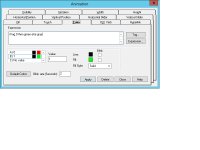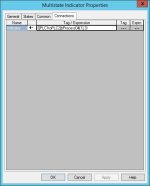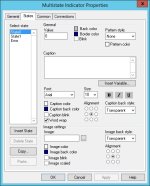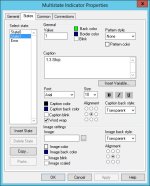bishoposiris
Member
I'm running FactoryTalk View Studio SE 9.0. I have a multistate indicator that I want to show gray if a tag is off/low and show green if it is on/high. Initially I was trying this on the bit level until I realized that the States only took integer values. So then I tried just using the tag by itself and passing the value of the tag based on the bits that were high. For example, if Tag.0 is 1, Tag.1 is 2, Tag.2 is 4, and Tag.3 is 8 then if Tag.0 and Tag.3 are high then Tag would be 9 and that's what would be passed to the state value. But that isn't working either. As it is it always shows high no matter what the state is. What am I doing wrong?







